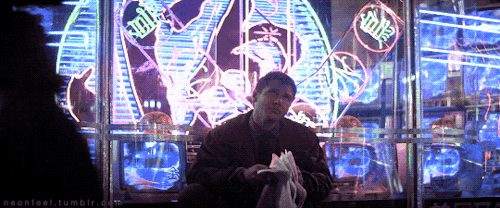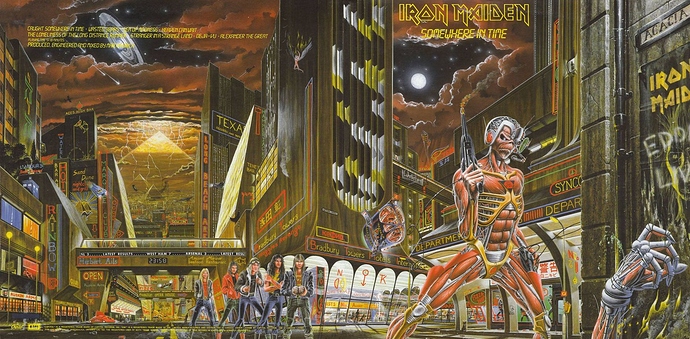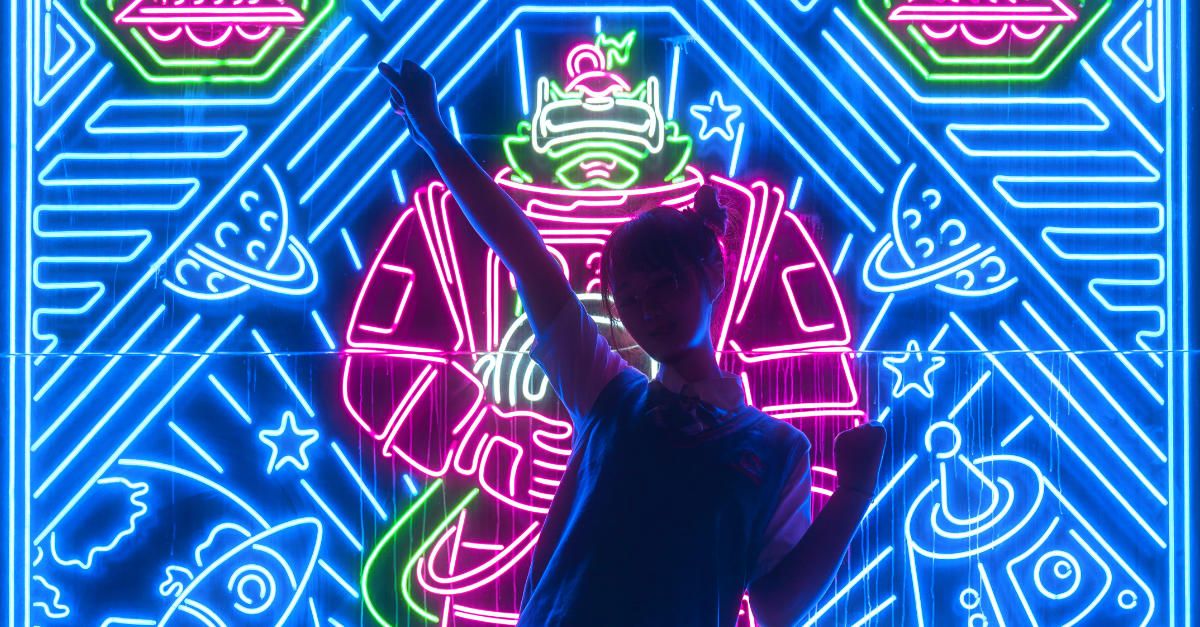Sometimes moving into the future feels like a quote of the past – in fashion, in product design, in (especially indie) computer games, in music and in visual arts. The 20’s of this century appear like a flashback of the 80’s of the last century, at least in some aspects.
Cyberpunk aesthetics are a good example.
‘Cyberpunk’ perfectly correlates with an everlasting theme of a fragile, broken and neon glowing future to come. It’s an expression of a world where a dystopian cyberspace, holographic beings and post-capitalistic overlords already replaced green landscapes, social cohesion and the simple life. The light is cold and so is the world, which is full of signals and funky things, but a lonely place for survivers.

Ridley Scott’s Blade Runner is one out of many cultural contributions which formed this collective (and visually defined) idea of the cyberpunked future … and perhaps Blade Runner is also asking what human existence essentially means.

The cover-art of Iron Maiden’s Somewhere in Time (btw. one of my very first vinyl albums) seems to be one of the legit continuations of the visual ideas we adapted for example through Blade Runner. And even today, round about 40 years later, the cyberpunk theme is still vital concept in our global mental model. Commercially, like in the video game Cyberpunk 2077, in arts, nfts, websites and where not …
The fittest visual codes of the 80’s survived and are still forming a meta-text, which is embedded in the narrative of a past’s future.
The time we are in is a time of change and disruption. The global society is introducing more and more future technology but could not overcome hunger, dictators / autocrats and war. The climate crisis and the pandemics became a shared impression of reality together with robots and digital money. Finally, it is not surprising that there is a reason for the re-/ upcycling of a cold neon aesthetic vocabulary.
Change (positive or negative change) is fascinating, but nothing people would associate with coziness. When the illusion of a linearity breaks, then artists have to sit down and work – because the Zeitgeist needs an update. Today we need more visions and a new vocabulary to describe, understand and create a future. It is art time!
Today, most of the creative output is somehow a formal and aesthetic repetition or and incremental baby-step on top of what already existed. Like the cyberpunk-stuff. Most of what is created today is not necessarily innovative. And that’s ok, sometimes the dots need to get (re-) connected first (intentionally or by accident, by collaborating groups or individuals) before a new language suddenly appears. But still, the 20’s still feel a bit like the 80’s, and perhaps that’s indicating the search for something new, something innovative. The exploration of the new is currently stucked in the vocabulary of the past, but who knows … the 20’s are not over yet.
Please feel free to leave a comment, if you think that the 20’s feel exactly like the 20’s 🙂






